Jani - print
Our graphic studio offers comprehensive design support at every stage of the order process. The team of designers creates unique patterns and adapts them to various printing techniques, such as screen printing, digital printing (DTG, DTF), or sublimation, ensuring color accuracy and attention to detail. The studio also assists clients in visualizing designs on clothing, allowing them to evaluate the final effect before printing. With modern tools and experience, the designers advise on optimal solutions to ensure each print is durable and aesthetically pleasing.
Screen Printing
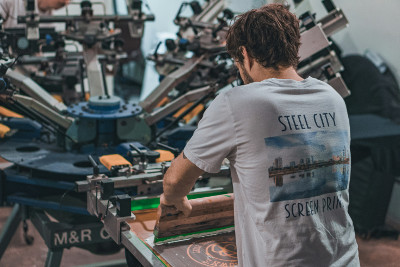
Screen Printing - is one of the oldest and most durable finishing methods for clothing, resistant to frequent washing, abrasion, and external factors. In this printing technique, the ink is applied to a previously exposed screen. Then, the ink is pressed through the open areas of the screen with a rubber squeegee directly onto the material to be printed. The advantages of screen printing include excellent material coverage, a wide range of colors and shades, a durable and highly resistant print, and a cost-effective price for large volumes.
Digital printing DTF and DTG
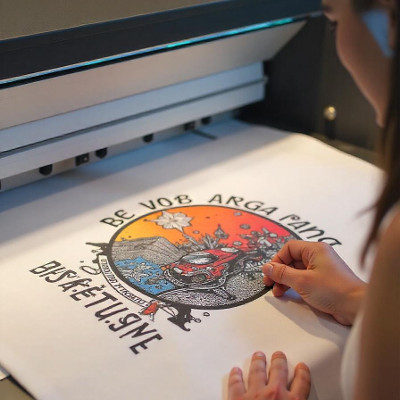
Both printing types, DTF (Direct to Film) and DTG (Direct to Garment), are modern digital printing methods for clothing, but they differ in technique and final effect. DTF prints are durable, flexible, and resistant to stretching and washing. They form a thin layer on the surface of the material, which may be slightly noticeable to the touch, but they are very resistant to wear and tear. DTG prints have a more “natural” look, as the ink penetrates the fabric. They feel softer to the touch, though their durability may be somewhat lower on less prepared surfaces or dark materials. Thanks to material versatility and durability, DTF is well-suited for the production of workwear, promotional items, or sportswear, while DTG is more suitable for everyday clothing, where a gentler, more “textile-like” print is desired. Ideal for smaller print runs.
Transfer screen printing
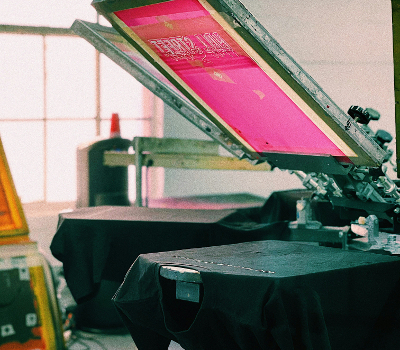
Transfer screen printing is a printing technique for clothing, in which the design is first printed onto special transfer paper using screen printing, and then transferred onto the fabric with a heat press. After pressing, the image adheres to the material, creating a durable print. It withstands regular use well and maintains its colors over a long period. Transfer screen printing allows for very precise prints, which is particularly useful for complex designs or small elements, and can be used on various types of materials such as cotton, polyester, or fabric blends. It is especially cost-effective for small graphics and larger print runs.
Sublimation printing
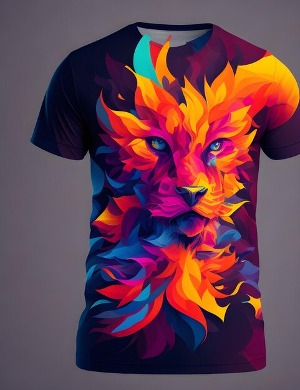
Sublimation printing is a process in which dyes are heated to a gaseous state and directly infused into the material. This method is particularly suitable for synthetic materials such as polyester. One advantage of sublimation printing is its high durability and color intensity, as the colors deeply penetrate the fibers. The printed materials are abrasion-resistant and do not fade, even after many washes.
Flex printing
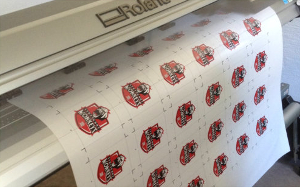
Flex printing is one of the popular printing methods for textiles, where the design is cut from thin polyurethane (PU) or polyvinyl chloride (PVC) and then transferred onto the material using a heat press. Flex printing is very durable, elastic, and resistant to damage, making it ideal for work, sports, and promotional clothing. One advantage of flex printing is the vibrant, intense colors that stand out well on both light and dark materials.